Editor’s Note: This story was originally published in Life & Thyme Issue Five, The Nostalgia Issue.
Oh, Canada. With your majestic natural beauty, polite liberal values, diversity of people, long winters and too short summers, consider this my love letter to you and your food.
I was born in Toronto—a sprawling, dynamic metropolis situated on the shores of Lake Ontario—and grew up in Saint Catharines, the largest city in the Niagara region—which also sits on the lake’s edge, enjoying a distant view of Downtown Toronto. My memories of growing up in Canada are specific to this area, as well as to the family road trips we took to neighboring Québec or westward across the prairie provinces. Being born into an Indian family also meant my childhood is reminiscent of an assortment of Punjabi food classics, such as chole bhature and sweet lassi (the best of which were served on Airport Road in Toronto), tandoori chicken and buttery naans, and a variety of Indian sweets like kulfi, gulab jamun and jalebi. These were enjoyed over the years with parents, grandparents, aunts and uncles. But like any Indian kid born in this country, we first-generation Canadians had serious pride that extended past our passports and hockey, to the food we ate with our siblings, cousins and friends in our homeland.
Though Canadian nosh isn’t as definable as other native foods, like French, Italian, Indian or Japanese, it has been shaped and impacted by continual waves of immigrants, and varies widely depending on region. The earliest foods of Canada, rooted in the cuisines of First Nations peoples and the English, Scottish and French, were expanded upon during the 19th and 20th centuries when immigrants arrived to Canada from Central, Southern and Eastern Europe, South Asia, East Asia, and the Caribbean. This smorgasbord of cultures is what makes Canada—and its food—so great.
A Collage of Cuisines
From the traditional aboriginal food techniques of Canada’s First Nations and Inuit peoples, to the scores of immigrants who have settled across the country, building communities in each province, the history and diversity of Canadian citizens has played a significant role in shaping the cuisine we enjoy today. Early settlers and traders account for culinary influences in various regions; people from the British Isles put down roots in southern Ontario, Newfoundland and the Maritime provinces; French settlers took up residence in southern Québec, northern Ontario and New Brunswick; and strong Dutch and Scandinavian influences can be found in southwestern regions of Ontario.
Alberta, Saskatchewan and Manitoba—Canada’s prairie provinces—witnessed a massive immigration in the pre-World War I era from eastern and northern Europe, with Ukrainian, German and Polish cuisines strongly influencing this part of the country. British traditions can be found in British Columbia, and in certain interior pockets, the food of Doukhobors—Russian-descended vegetarians. Jewish immigrants from Eastern Europe who came to Canada during the late 1800s also had a significant culinary impact within the country, and are renowned for creating Montréal-style bagels and Montréal smoked meat.
Every time I head back for a visit, I make sure to get my fill of my favorite Canadian grub. And every now and then—when nostalgia kicks in and I can’t quite make the trek from LAX to YYZ—I head into the kitchen and create my very own versions of Canadian classics.
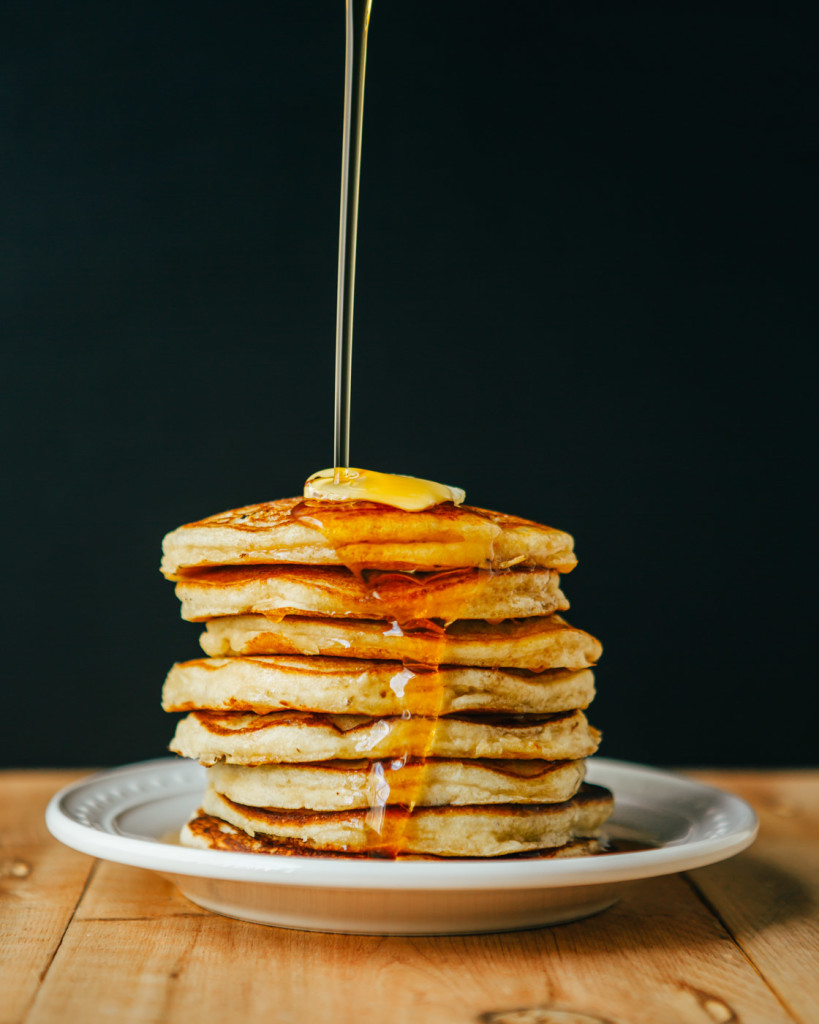
Canadian Maple Syrup
It’s sacrilegious to speak of pancakes or waffles without also mentioning maple syrup. Some of my best childhood breakfast memories include dousing a short stack of flapjacks with a thick stream of this amber-colored liquid, chasing each dripping, syrup-soaked bite with a gulp of cold milk. Thankfully, the real-Canadian-deal is available in the good ol’ U.S. of A.
Canada—specifically the province of Québec—is the world’s largest producer of maple syrup, something we Canadians are very proud of as maple products are symbolic of Canada (just take a look at our flag). The first syrups—collected and used by the aboriginal people of Eastern Canada—were created by continually freezing collected maple sap. The water—once in the form of ice—was removed, concentrating the sugar in the remaining sap. European settlers adopted this practice, gradually refining syrup-making methods. Processing of maple syrup was further refined in the 1970s thanks to technological advances, making maple syrup one of the most regularly enjoyed Canadian foods of aboriginal origins. A weekend breakfast or brunch feast would not be complete without it.
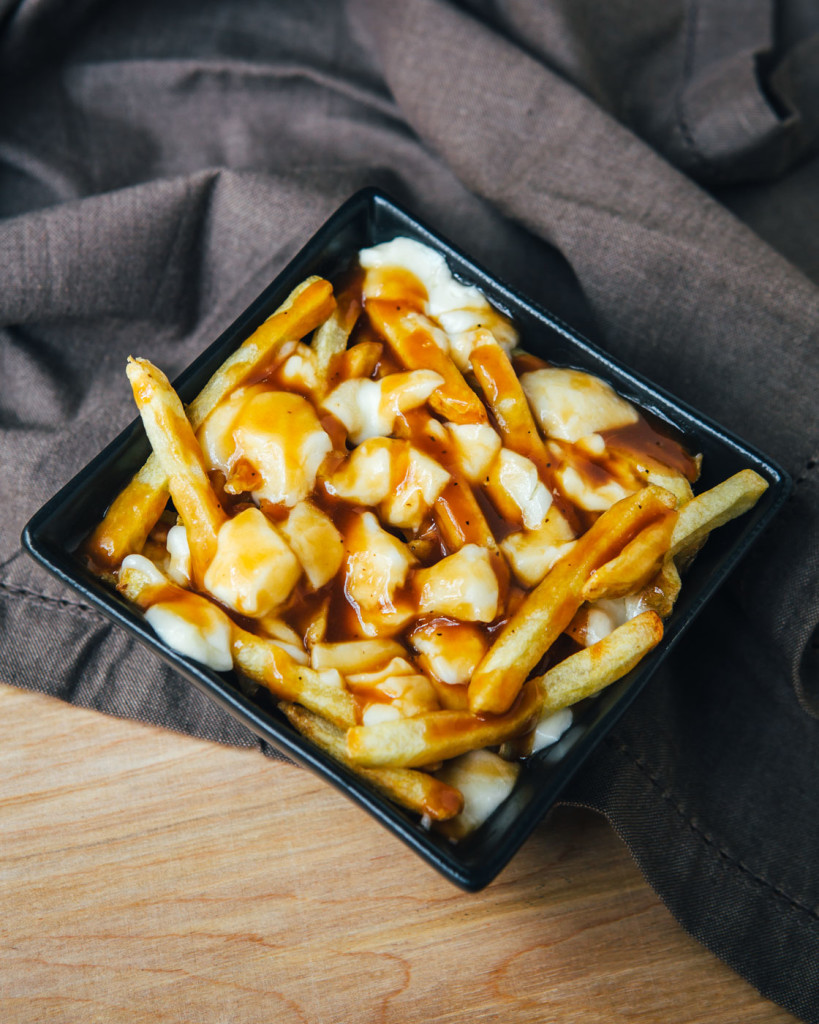
Poutine
Whether you’re grabbing this Québec-born dish as an indulgent afternoon snack, or gratifying drunk-dish at two in the morning, poutine is the quintessential Canadian comfort food. Pronounced poo-tin (French Canadians will think you sound silly for calling it pou-teen), it can be found across Canada, but my favorite experiences have always been in Montréal and Toronto. Poutine’s simple recipe of french fries and cheese curds topped with gravy may seem elementary, but there’s serious technique involved. The traditional Québec version is usually made with potatoes of a medium thickness that are sometimes fried twice, ensuring a soft interior yet crispy exterior. The bite-sized, room temperature, fresh cheese curds—referred to as “squeaky cheese”—are cooked, then allowed to cure to develop tanginess. The savory sauce brune or brown gravy, a combination of beef and chicken stock that is somewhat salty and mildly spiced with black pepper, should be substantial, yet thin enough to trickle down through—and coat—the mass of fries and cheese curds.
With poutine, timing is everything so as not to compromise any of these ingredients. Once the fries and cheese curds are paired, the hot gravy is poured over the top just before serving, warming without completely melting the curds. Obtaining the proper food textures is an essential part of the poutine eating experience.
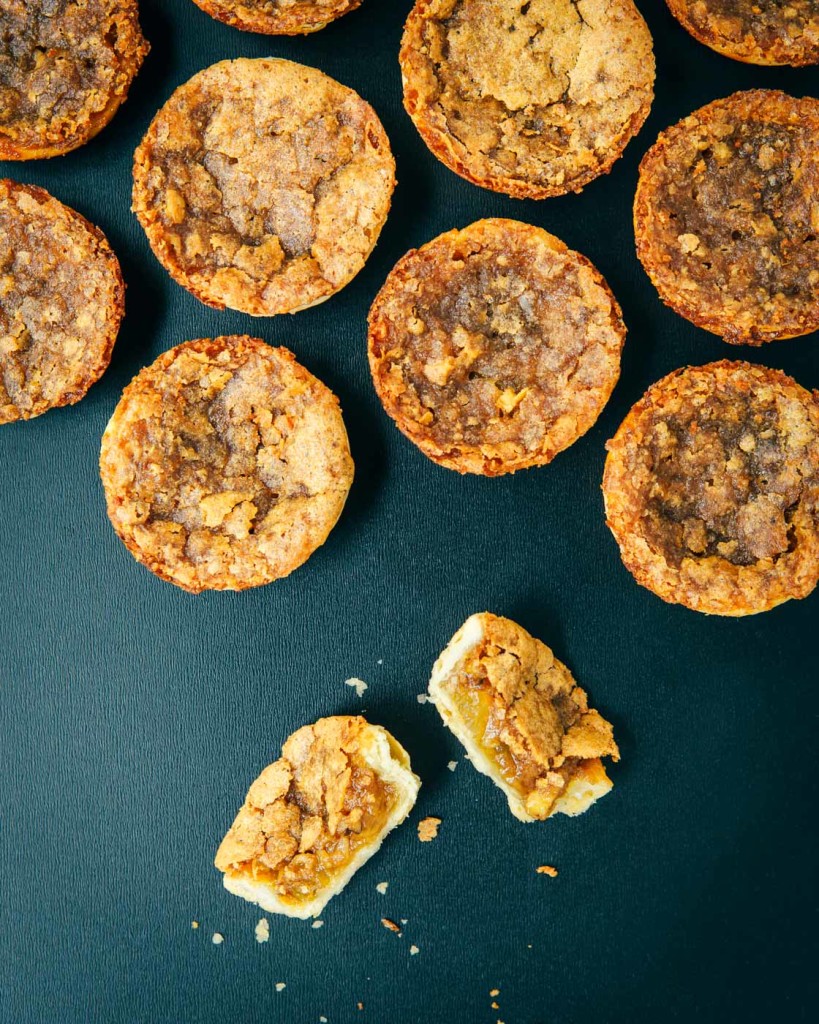
Butter Tarts
If there ever was a dessert regarded as truly Canadian, it’s the butter tart. Common in pioneer cooking, these small pastries are considered to be one of the few recipes of genuine Canadian origin, and are highly regarded in Eastern Canadian cuisine.
Growing up, my butter tart experience was always the store-bought kind (my mom was a wonderful cook, but not really a baker by Western standards). A warmed up butter tart with a glass of milk was easily my favorite after-school snack. Each bite into the flaky pastry and its crunchy top would reveal a gooey interior speckled with plump raisins.
Whether store-bought or made-from-scratch, a traditional butter tart will always consist of a flaky pastry shell filled with a mixture of butter, sugar, eggs and raisins that is baked until the top is crisp and the inside is semi-solid. Recipes do vary from family to family, so the outward appearance of the tart may differ. Chopped walnuts or pecans are also commonly added, though purists claim this bastardization should not be allowed. I say if you love nuts—as I do—go ahead and put them in.
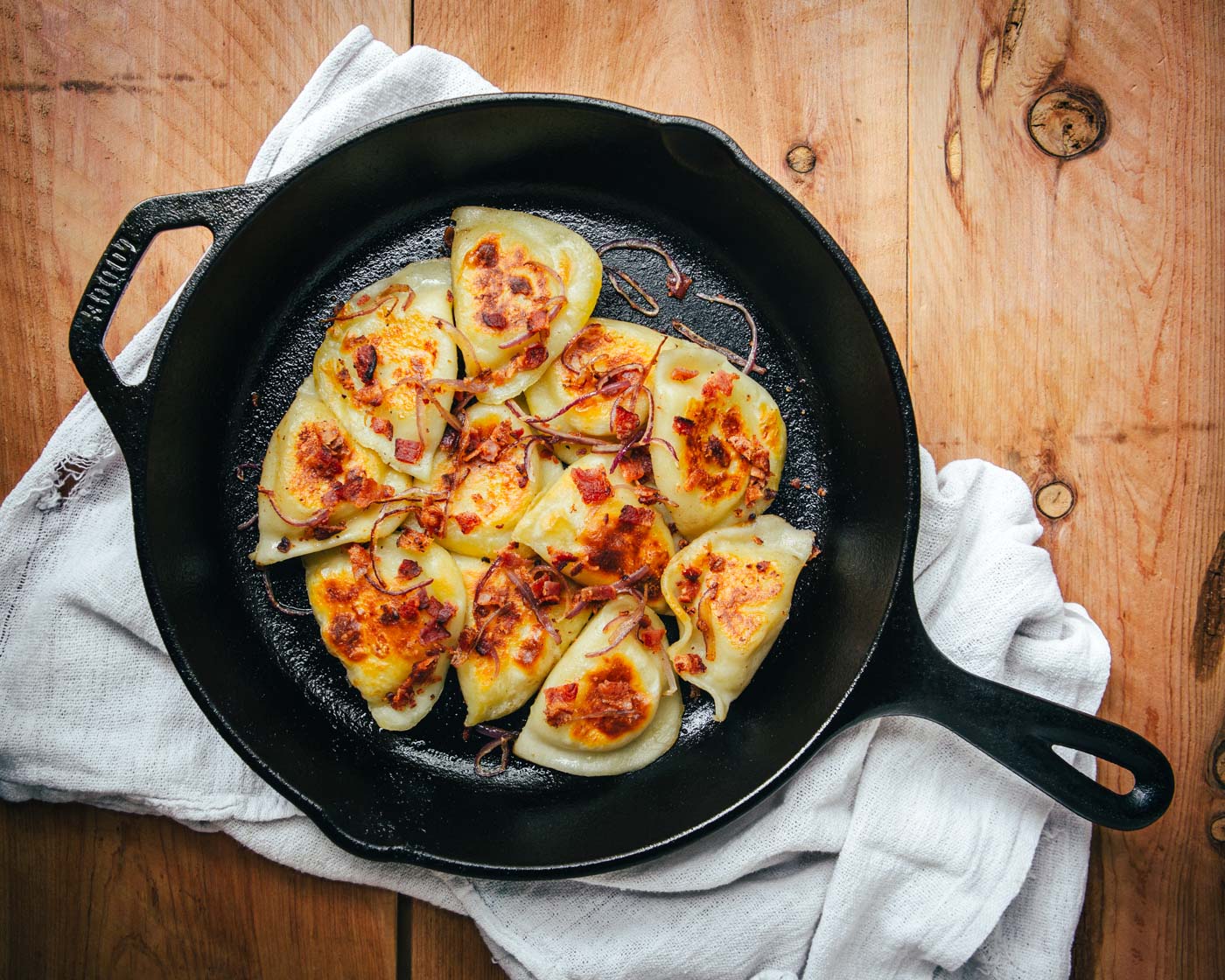
Perogies
Pillowy dumplings stuffed with creamy potatoes and cheese, topped with fried onions, bacon and sour cream. It’s like a Polish grandmother giving you a warm hug on a plate.
Also known as pierogi, pirogi and varenyky, perogies are found throughout Canada—having been popularized by Central and Eastern European immigrants—and are especially linked with Poland and Ukraine where they are considered national dishes. Traditionally considered peasant food, perogies are now an important part of Eastern European cultures, though the recipes vary slightly from country to country. Canada has sizable Polish, Ukrainian and Rusyn populations—and immigrants from many other perogy-making people, such as the Mennonites—so a wide variety of recipes are used.
These delectable dumplings are made by wrapping unleavened dough around savory or sweet fillings. They are then cooked in boiling water, sautéed in butter to create a crispy shell, and finished with an assortment of toppings. Perogies are typically semi-circle in shape, though triangular and rectangular iterations are also found. For savory versions, they may be stuffed with mashed potatoes, cheese, fried onions, quark (also known as “farmers’ cheese”), sauerkraut, cabbage or ground meat. Dessert perogies can be filled with a variety of different fruits, depending on the cook’s preference. Blueberry, strawberry, saskatoon berry, raspberry, cherry, peach, plum or apple are all commonly used. Whatever your preference, perogies are little dumplings of love that should be enjoyed and shared often.
Home Is Where the Hunger Is
Food memories from my childhood are little vacations to my past. No matter how far I’ve traveled or how many culinary adventures I’ve taken, revisiting the flavors of my youth reminds me not to take my adult life so seriously—that it’s cool to appreciate simple flavors over complicated gastronomical feats. But above all, it’s a reminder of where I’m from, and that I’m proud to be Canadian.

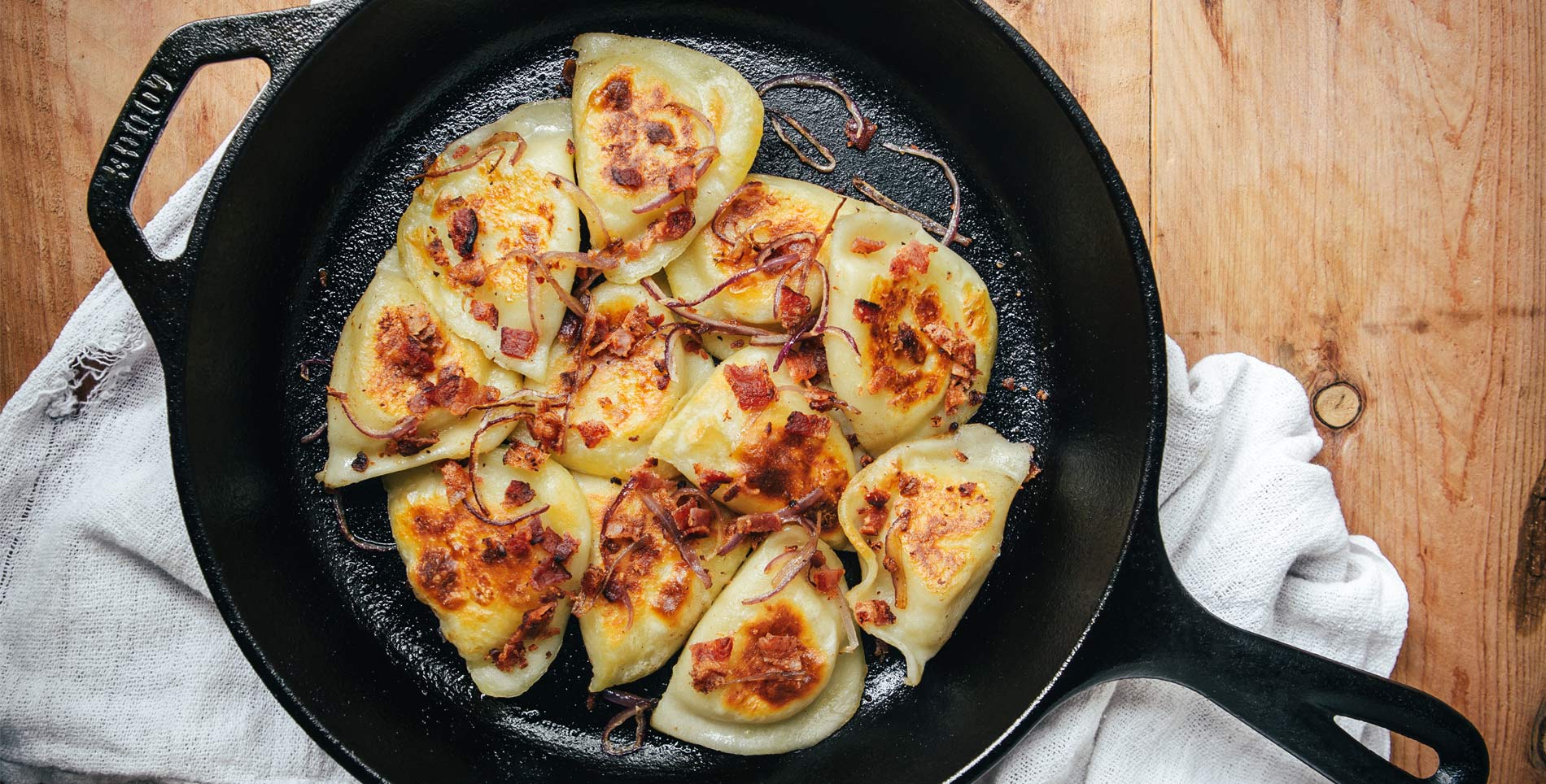

Our comments section is for members only.
Join today to gain exclusive access.